How we used to fly first class: caviar, any alcohol, smoking right in the seat and a full-fledged berth
Categories: Design and Architecture | History
By Pictolic https://pictolic.com/article/how-we-used-to-fly-first-class-caviar-any-alcohol-smoking-right-in-the-seat-and-a-full-fledged-berth.htmlAt the dawn of aviation, airplane interiors looked completely different from what we are used to. If you want to sleep now, pay. What happened before? How did privileged passengers fly before? Our story of first class in aviation will answer this question.

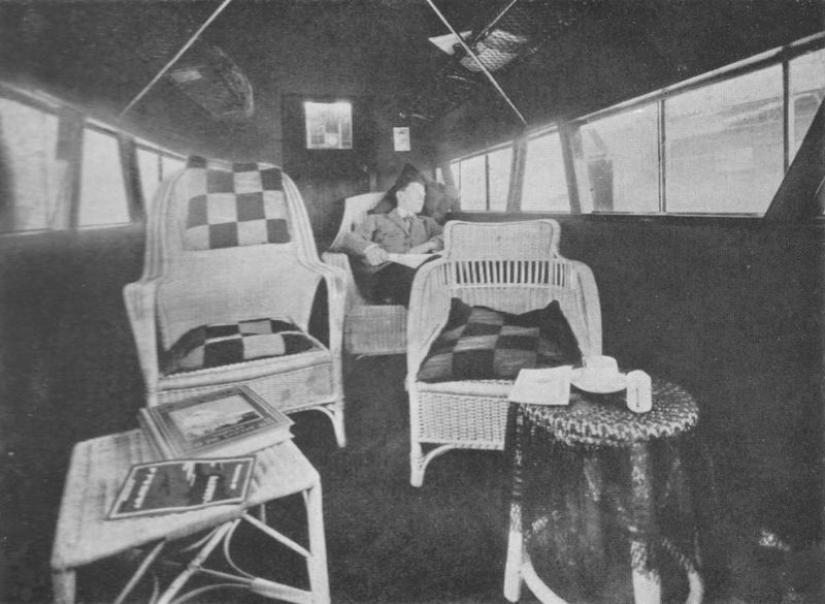 1. The very first airplanes were narrow and long, and passenger seats were perceived as an innovation, a kind of luxurious and optional addition, like caviar to a buttered sandwich. The first seats were the most ordinary chairs and armchairs; there were no seat belts. At first, passengers sat immediately behind the pilot; there were no partitions. It looked something like this. 1926 The heated cabin is something to be proud of.
1. The very first airplanes were narrow and long, and passenger seats were perceived as an innovation, a kind of luxurious and optional addition, like caviar to a buttered sandwich. The first seats were the most ordinary chairs and armchairs; there were no seat belts. At first, passengers sat immediately behind the pilot; there were no partitions. It looked something like this. 1926 The heated cabin is something to be proud of.
 2. Planes became larger and longer, seats were placed in two rows.
2. Planes became larger and longer, seats were placed in two rows.
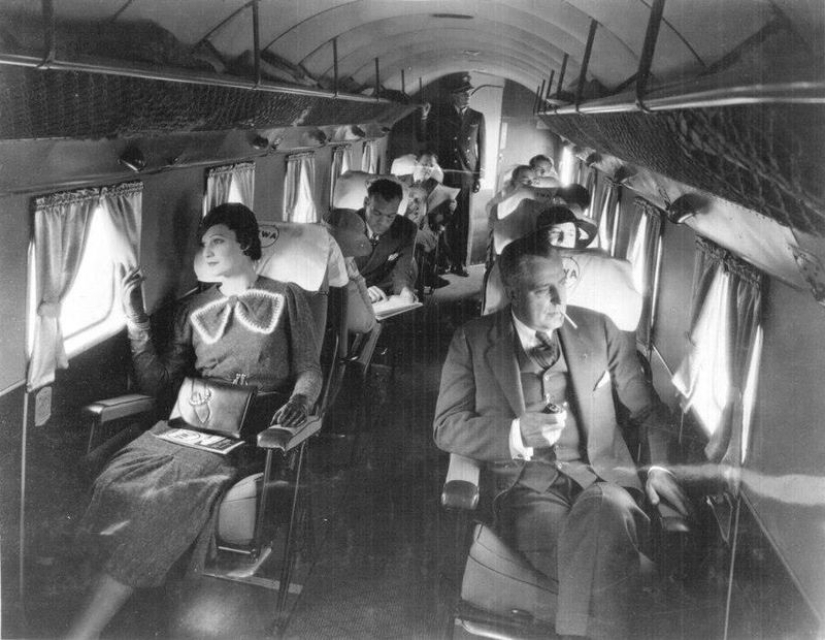 3. Photo from the 1930s.
3. Photo from the 1930s.
 4. Propaganda plane "Maxim Gorky", 1934
4. Propaganda plane "Maxim Gorky", 1934
 5. When airplanes became more or less suitable for commercial passenger transportation, the need for maintenance personnel arose. Here is Ellen Church, the world's first flight attendant. Started working in 1930. Smoking is allowed! The smoking ban is an invention of the last 20-30 years; before, everyone smoked cigarettes, cigarillos and cigars; no one thought about the harm from passive smoking.
5. When airplanes became more or less suitable for commercial passenger transportation, the need for maintenance personnel arose. Here is Ellen Church, the world's first flight attendant. Started working in 1930. Smoking is allowed! The smoking ban is an invention of the last 20-30 years; before, everyone smoked cigarettes, cigarillos and cigars; no one thought about the harm from passive smoking.
 6. Gradually, the capabilities of the aviation industry grew. The designers were inspired by luxury train express trains and ocean liners and created separate compartments for 2-3 people on the planes. The issue of passenger comfort was acute: in 1938, a flight from London to Brisbane, Australia lasted 11 days (more than a month on the ship) and involved about 20 stops. Advertising brochures for the British airline Imperial Airways read: “From London to Singapore - in 8 days!” The pride of the company was the Empire Flying Ship. Seats:
6. Gradually, the capabilities of the aviation industry grew. The designers were inspired by luxury train express trains and ocean liners and created separate compartments for 2-3 people on the planes. The issue of passenger comfort was acute: in 1938, a flight from London to Brisbane, Australia lasted 11 days (more than a month on the ship) and involved about 20 stops. Advertising brochures for the British airline Imperial Airways read: “From London to Singapore - in 8 days!” The pride of the company was the Empire Flying Ship. Seats:
 7. Like in the best restaurants in Paris.
7. Like in the best restaurants in Paris.
 8. Something like a social salon on board.
8. Something like a social salon on board.
 9. Breakfast in bed.
9. Breakfast in bed.
 10. The basis of all basics is healthy sleep.
10. The basis of all basics is healthy sleep.
 11. It is incorrect to talk about classes of service in this case. Until the 1950s and 60s, everything was first class: tickets were very expensive, and only wealthy people could afford to buy them. For example, a trip from London to Singapore cost $17,600 at current exchange rates. The plane was a branch of a social salon, where it was considered unacceptable to show up in T-shirts and shorts, as we were used to. Passengers boarded the plane almost in evening attire. The photo shows an American Sikorsky S40B aircraft, 1930s.
11. It is incorrect to talk about classes of service in this case. Until the 1950s and 60s, everything was first class: tickets were very expensive, and only wealthy people could afford to buy them. For example, a trip from London to Singapore cost $17,600 at current exchange rates. The plane was a branch of a social salon, where it was considered unacceptable to show up in T-shirts and shorts, as we were used to. Passengers boarded the plane almost in evening attire. The photo shows an American Sikorsky S40B aircraft, 1930s.
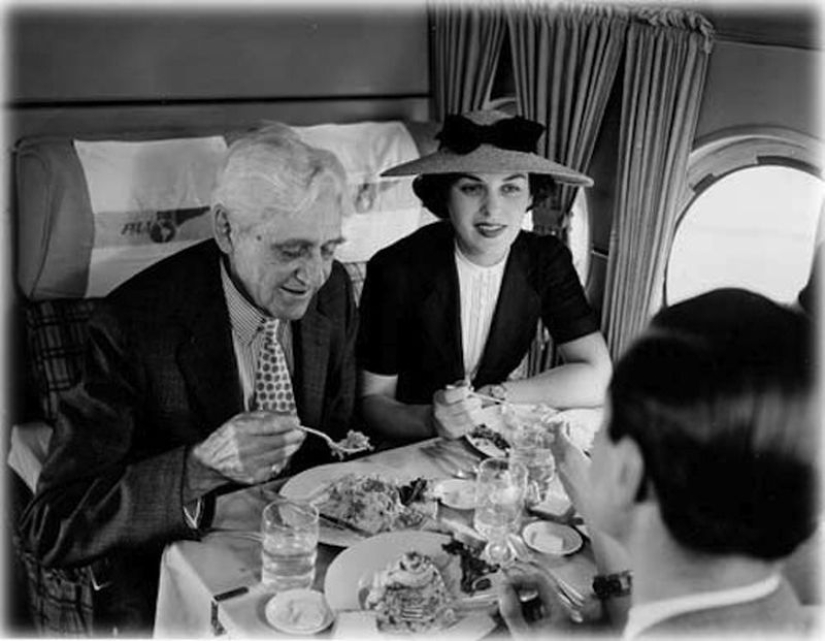 12. Same plane, gentlemen are having lunch. Please note: no disposable plates, only crystal, only porcelain! Passengers were also offered unlimited amounts of alcohol. However, cases of drunken brawls were rare, since potential rowdies - ill-mannered proles - were eliminated at the stage of purchasing tickets.
12. Same plane, gentlemen are having lunch. Please note: no disposable plates, only crystal, only porcelain! Passengers were also offered unlimited amounts of alcohol. However, cases of drunken brawls were rare, since potential rowdies - ill-mannered proles - were eliminated at the stage of purchasing tickets.
 13. British actors Winifred Shotter and Jack Lester fly to India, 1945.
13. British actors Winifred Shotter and Jack Lester fly to India, 1945.
 14. Late 1940s.
14. Late 1940s.
 15. Bar on board, circa 1945
15. Bar on board, circa 1945
 16. On airplanes they could easily serve a lunch of 5-6 breaks.
16. On airplanes they could easily serve a lunch of 5-6 breaks.
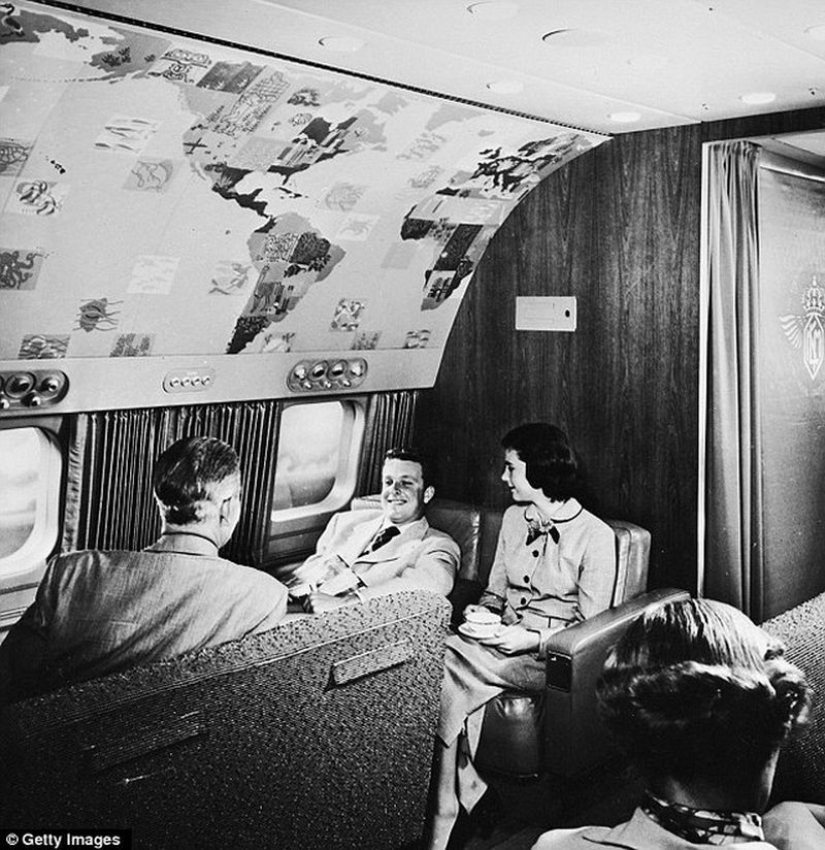 17. 1955, interior designer - Henry Dreyfus
17. 1955, interior designer - Henry Dreyfus
 18. One of the symbols of the “Golden Age of Aviation” is the Boeing 377 Stratocruiser, which began to be used in 1949. It also had sleeping accommodations:
18. One of the symbols of the “Golden Age of Aviation” is the Boeing 377 Stratocruiser, which began to be used in 1949. It also had sleeping accommodations:
 19. Airplanes are so comfortable that you can travel with children, these photographs hint to us.
19. Airplanes are so comfortable that you can travel with children, these photographs hint to us.
 20. Hall.
20. Hall.
 21. Lunch on the Stratocruiser.
21. Lunch on the Stratocruiser.
 22. And this is 1952 and one of the first commercial jet aircraft. A woman does cosmetic procedures in a room specially designed for this.
22. And this is 1952 and one of the first commercial jet aircraft. A woman does cosmetic procedures in a room specially designed for this.
 23. Boeing 707, its operation began in 1958 with Pan American, which in the 1960s was considered the most luxurious airline in the world. 1959, passengers drink to love.
23. Boeing 707, its operation began in 1958 with Pan American, which in the 1960s was considered the most luxurious airline in the world. 1959, passengers drink to love.
 24. Conduct small talk in the salon.
24. Conduct small talk in the salon.
 25. The next important stage in the history of civil aviation is the Boeing 747. First class passengers are served lunch.
25. The next important stage in the history of civil aviation is the Boeing 747. First class passengers are served lunch.
 26. Champagne is poured. In those days, very strict requirements were imposed on flight attendants. They had to be a combination of model appearance, the manners of a socialite, the skills of a housekeeper, waitress and nurse (for example, if necessary, a flight attendant could deliver a baby). There were also formal criteria: weight from 49 to 60 kg, age from 21 to 27, high moral qualities and the absence of a husband. At Pan Am, girls were asked to translate text from French into English, walk around the room to demonstrate their gait and posture, and weigh themselves. Those who passed the selection were taught etiquette, geography, and national traditions of different countries by the airline.
26. Champagne is poured. In those days, very strict requirements were imposed on flight attendants. They had to be a combination of model appearance, the manners of a socialite, the skills of a housekeeper, waitress and nurse (for example, if necessary, a flight attendant could deliver a baby). There were also formal criteria: weight from 49 to 60 kg, age from 21 to 27, high moral qualities and the absence of a husband. At Pan Am, girls were asked to translate text from French into English, walk around the room to demonstrate their gait and posture, and weigh themselves. Those who passed the selection were taught etiquette, geography, and national traditions of different countries by the airline.
 27. Mid-1960s, a flight attendant with a fashionable updo offers snacks.
27. Mid-1960s, a flight attendant with a fashionable updo offers snacks.
 28. Canapes with caviar.
28. Canapes with caviar.
 29. Mid-1960s
29. Mid-1960s
 30. Pay attention to how the steward is dressed
30. Pay attention to how the steward is dressed
 31. American Braniff International, 1967
31. American Braniff International, 1967
 32. October 1969. Soviet intelligence officers Leontina and Morris Cohen, exchanged for their British counterpart, fly from London to Warsaw in all comfort. Smoking was still allowed.
32. October 1969. Soviet intelligence officers Leontina and Morris Cohen, exchanged for their British counterpart, fly from London to Warsaw in all comfort. Smoking was still allowed.
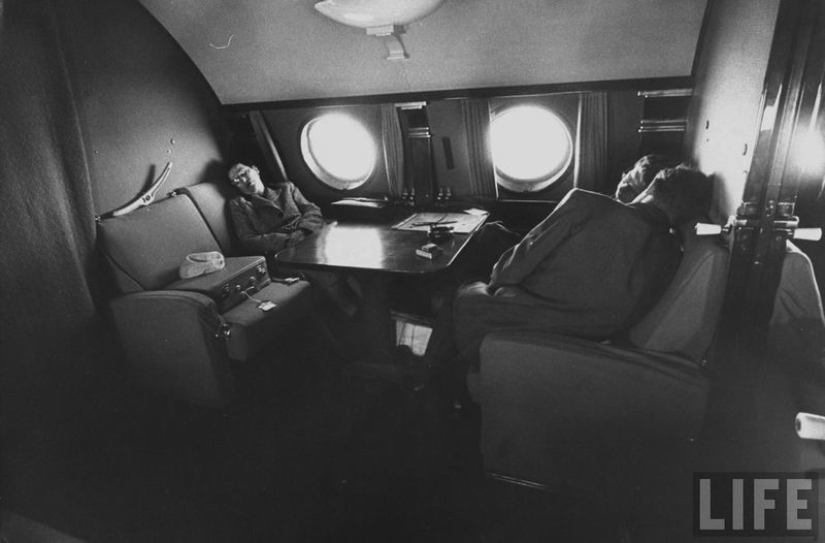 33. Reflections on the 1950s and 60s for civil aviation in the West are invariably filled with nostalgia for lost luxury. But have you ever heard of someone being sad about Soviet planes? Me not. Let's see how things stood.
33. Reflections on the 1950s and 60s for civil aviation in the West are invariably filled with nostalgia for lost luxury. But have you ever heard of someone being sad about Soviet planes? Me not. Let's see how things stood.
 34. Dogs were allowed to be carried directly in the cabin.
34. Dogs were allowed to be carried directly in the cabin.
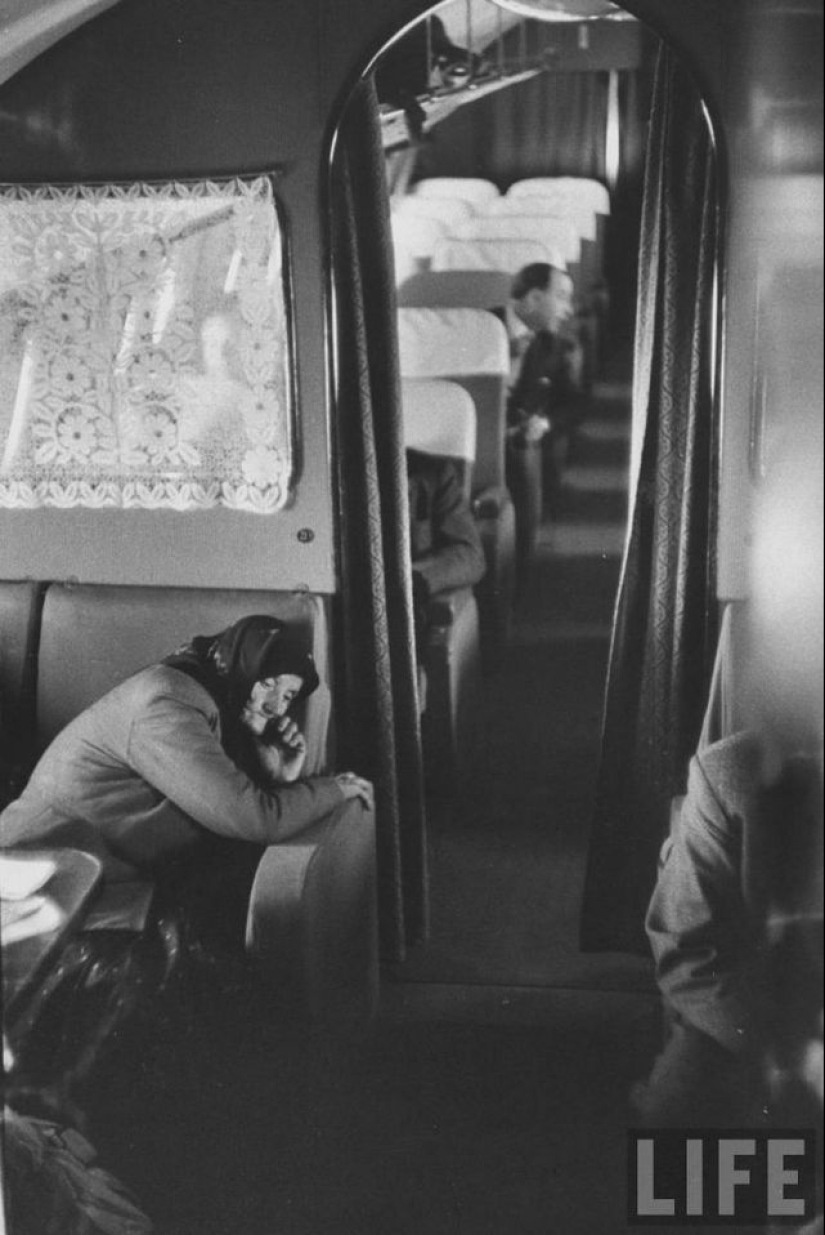 35. Often the most ordinary people were seated in first class seats.
35. Often the most ordinary people were seated in first class seats.
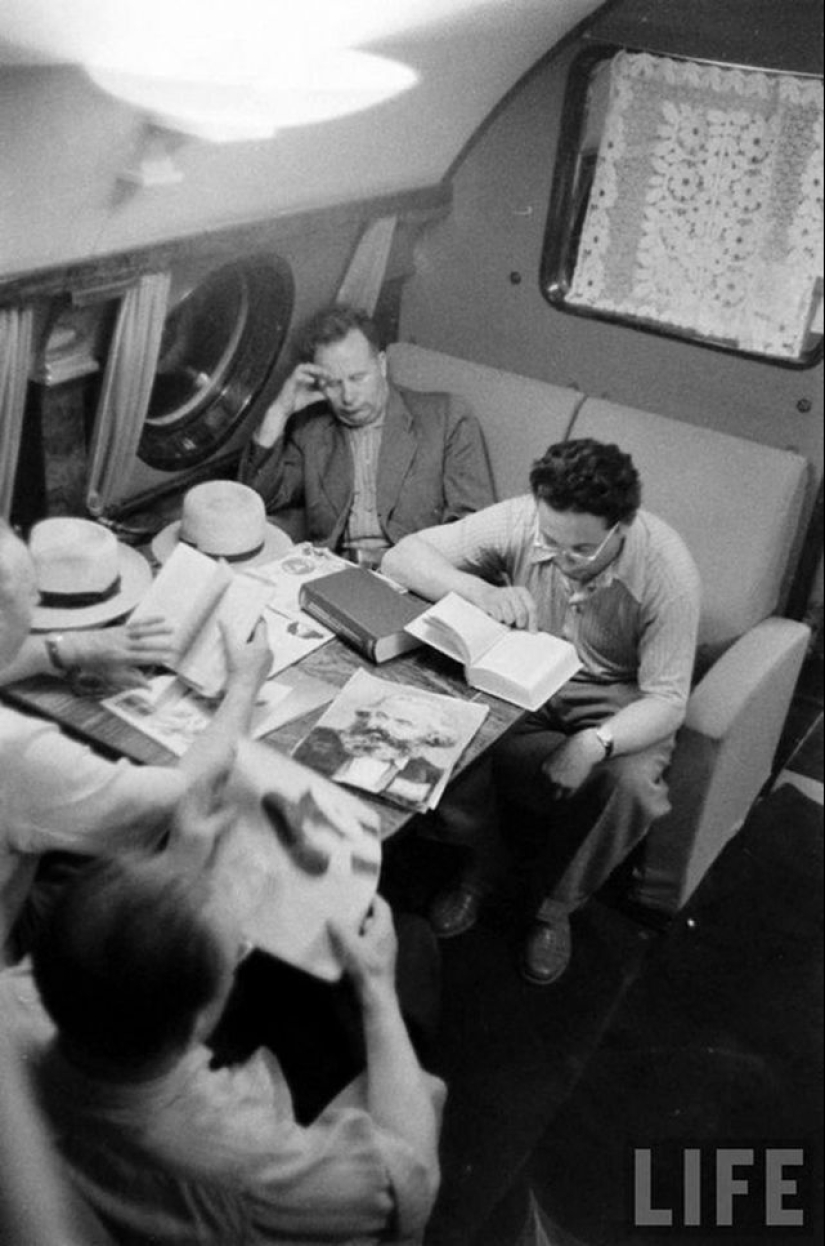 36. During the flight, Soviet citizens do not drink alcoholic beverages like Americans, but read and talk about Karl Marx!
36. During the flight, Soviet citizens do not drink alcoholic beverages like Americans, but read and talk about Karl Marx!
 37. Kitchen on TU-104. It was then that the concept of food on board appeared.
37. Kitchen on TU-104. It was then that the concept of food on board appeared.
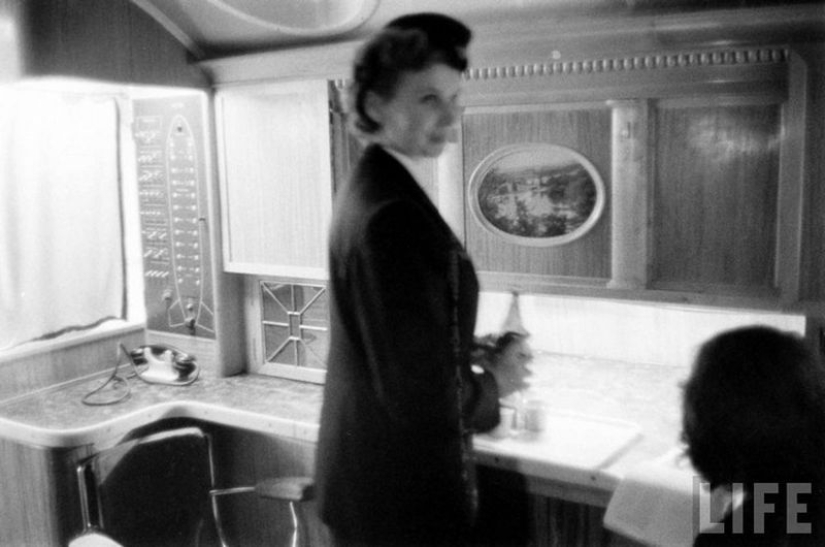 38. Wood paneling and leather everywhere. Everyone was impressed...
38. Wood paneling and leather everywhere. Everyone was impressed...
 39. ...but the TU-114 amazed the citizens even more. There appeared full-fledged luxury sleeping compartments for three people. Passengers were given a pillow and blanket.
39. ...but the TU-114 amazed the citizens even more. There appeared full-fledged luxury sleeping compartments for three people. Passengers were given a pillow and blanket.
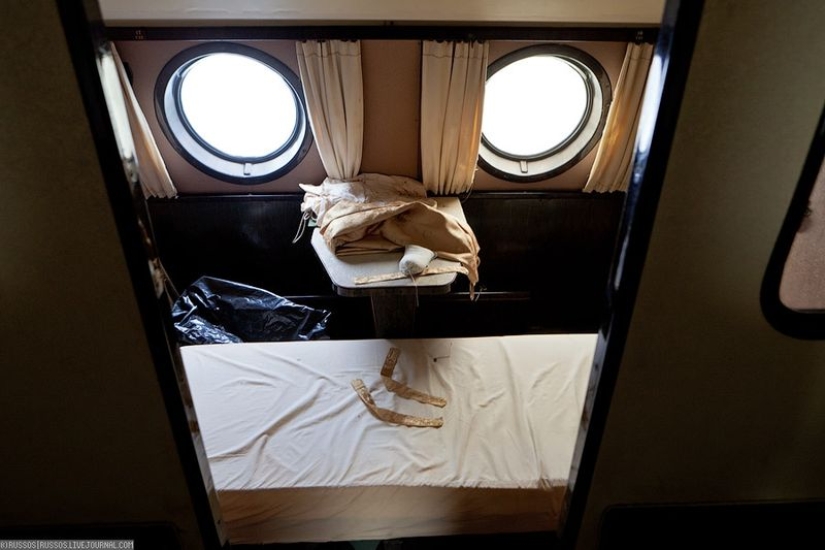 40.
40.
 41. In the Union they also knew how to live beautifully.
41. In the Union they also knew how to live beautifully.
 42. Here is seated first class.
42. Here is seated first class.
 43. Salon of the head of state in various modifications of the TU-134.
43. Salon of the head of state in various modifications of the TU-134.
 44. Here is an Aeroflot information brochure for the winter of 1961/62, you can see the order of ticket prices. Let me remind you that in 1962 the average monthly salary was 84 rubles. In 1973, the most expensive ticket, Moscow-Tokyo, cost 1,658 rubles in first class (with an average salary of 125 rubles).
44. Here is an Aeroflot information brochure for the winter of 1961/62, you can see the order of ticket prices. Let me remind you that in 1962 the average monthly salary was 84 rubles. In 1973, the most expensive ticket, Moscow-Tokyo, cost 1,658 rubles in first class (with an average salary of 125 rubles).
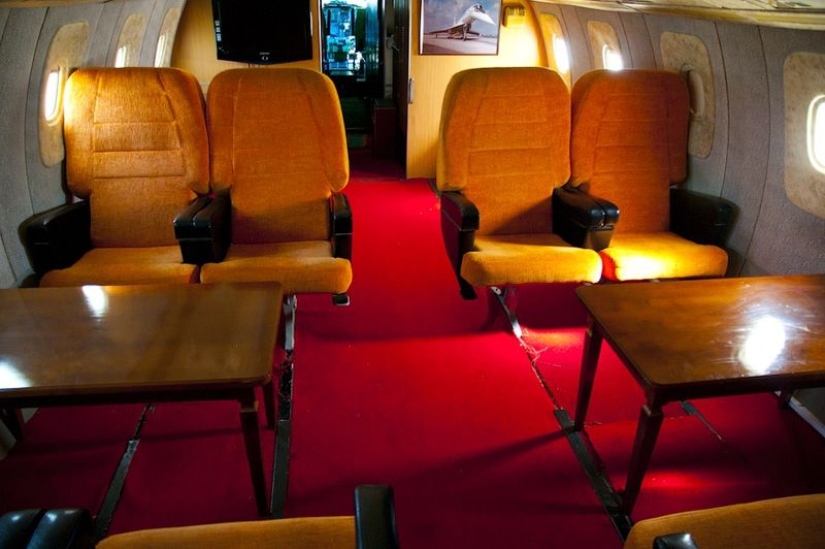 45. First class in TU-144.
45. First class in TU-144.
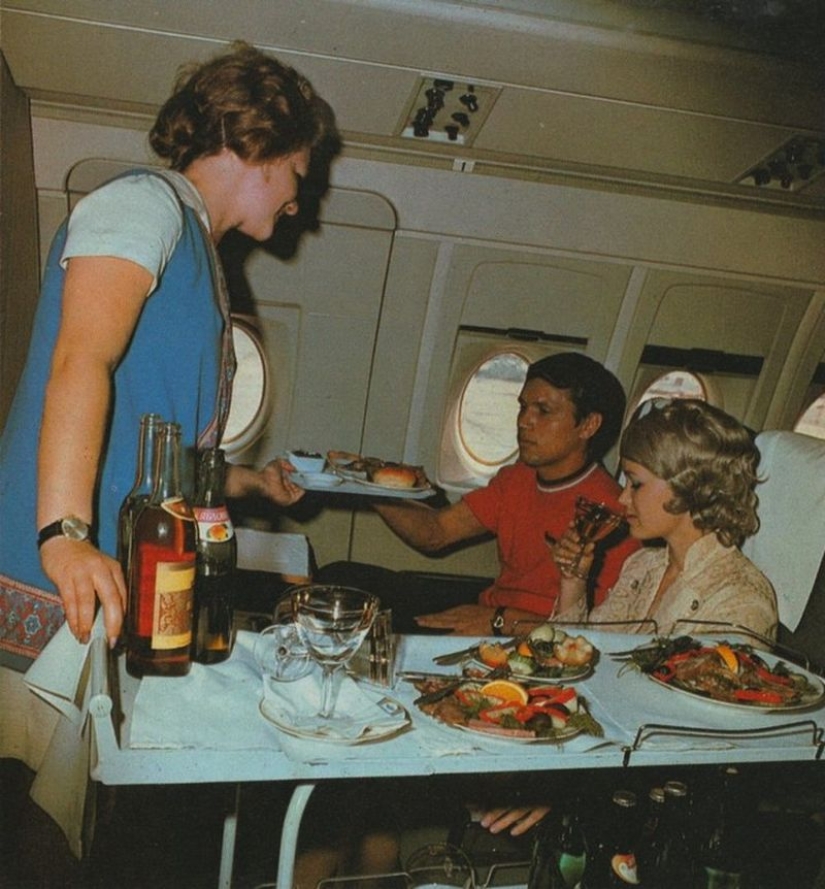 46. Here are advertising photographs of Aeroflot from the late 1980s - early 1990s.
46. Here are advertising photographs of Aeroflot from the late 1980s - early 1990s.
 47.
47.
 48.
48.
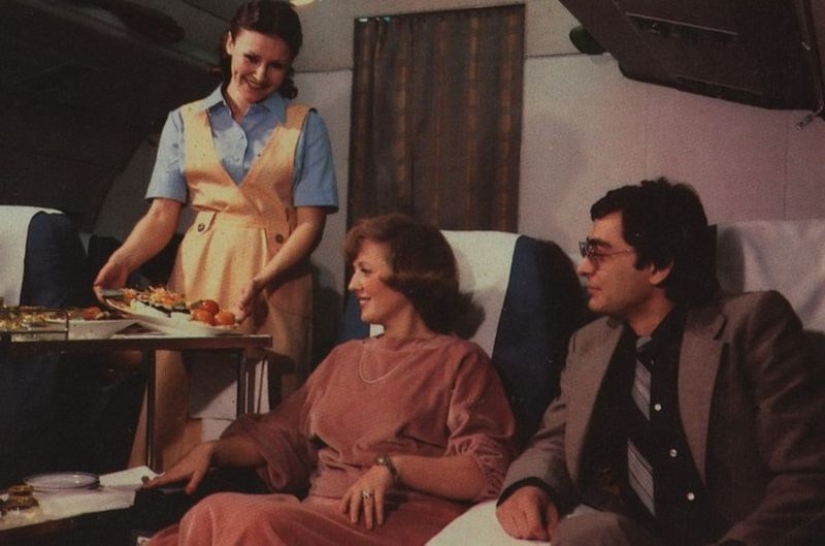 49.
49.
Recent articles

Photographer Dylan Hamm has been wondering for a long time how many microexpressions our face takes that we don't even know about. ...

New Jersey photographer Robin Schwartz photographed her adorable daughter Amelia with a variety of animals from 2002 to 2015. The ...

For an art project called Metamorphosis, body painters Léonie Gené and Jörg Düsterwald collaborated with photographers Laila ...